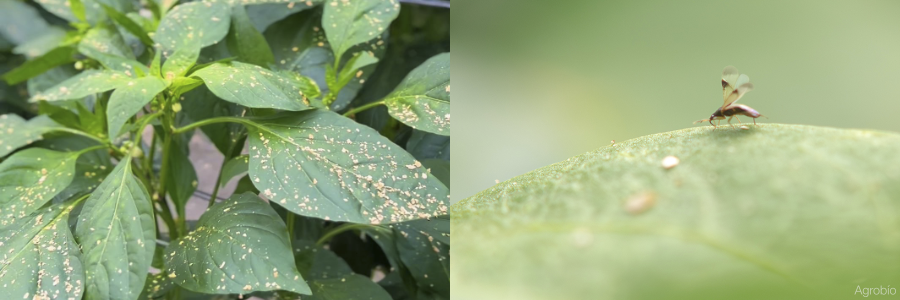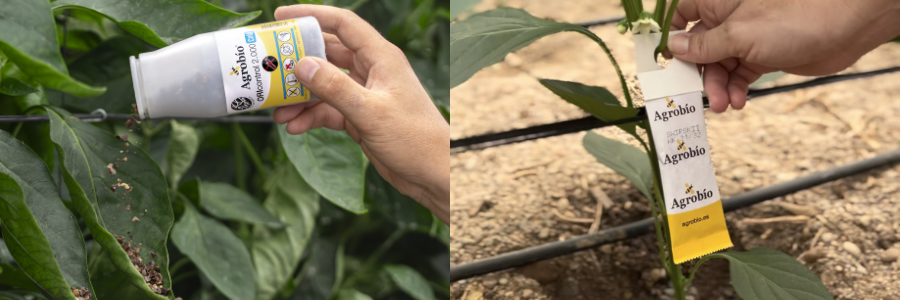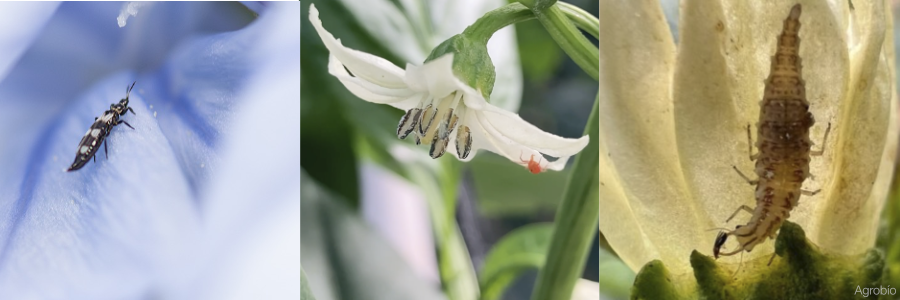Early action against Thrips parvispinus

Thrips parvispinus has become a rising threat to vegetable crops, particularly peppers. This invasive pest doesn’t just affect the commercial quality of the fruit—it can put the entire crop at risk if you don’t act fast.
Why you shouldn’t wait to take action
Some growers try chemical treatments first and only release natural predators once the pest is already widespread. This seriously cuts down the effectiveness of biological control. The advice is clear: stick to the release schedule and act early to prevent irreversible damage.
Products to protect vulnerable areas

Agrobío offers a complete package combining exclusive products with expert technical advice. Some highlights include:
-
ORIcontrol Cold (Orius laevigatus), the most powerful natural predator against Thrips parvispinus. Known for its hunger and toughness, it can eat lots of thrips every day. It can be released before flowering by combining it with POWERfood 3.0.
-
SWIRScontrol (Amblyseius swirskii) and MONcontrol (T. montdorensis), Predator mites that aren’t just an add-on—they’re the foundation of the strategy to break this pest’s life cycle.
-
POWERfood 3.0, a patented diet that feeds these helpers right on the plant, making it easier for them to settle in and multiply where the plant is most vulnerable. This food allows the release of predators even before flowering.

Plus, generalist allies like Chrysoperla carnea (CHRYSOcontrol), anystid mites, and natural predators like Haplothrips spp., Franklinothrips spp., and Aeolothrips spp. boost control efforts, especially during peak populations in fall and winter time.
Tips for effective biological control of Thrips parvispinus
To protect crops and keep fruit quality high, Agrobío suggests following these tips:
-
Release natural predators early—don’t wait for visible damage.
-
Monitor and tackle the first pest hotspots.
-
Follow the proven release schedule, especially for sweet peppers.
-
Avoid repeated chemical use before releasing beneficial insects.
-
Always include predator mites like SWIRScontrol and MONcontrol—they’re the core of the strategy.
-
Use specialized diets like POWERfood 3.0 to help beneficials establish and multiply.
-
Promote conservative control that keeps functional biodiversity and strengthens natural enemies.
Field trials and real-world experience back up this preventive strategy from Agrobío, which also offers expert technical support and fast shipping to ensure quick adoption.
For effective control of Thrips parvispinus, the whole vegetable sector needs to work together, applying biological control from spring onward—not just in peppers, but also cucurbits, berries, citrus, and ornamentals. This teamwork among growers is key to lowering pest pressure across affected crops and ensuring sustainable, long-lasting management.
Tags: Thrips parvispinus


